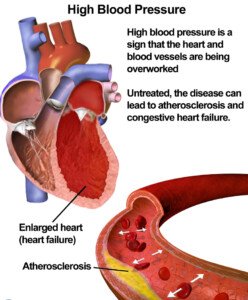
Is a blood pressure of 140 over 85 much better than 140/90, which marks the beginning of high blood pressure?
A reading of 140 over 85 needs to be interpreted within context.
If you’re lifting weights and your blood pressure during your set is 140 over 85, that’s perfectly fine.
Blood pressure is supposed to rise while you’re moving against resistance.
But a resting blood pressure of 140 over 85? Don’t get your hopes up that this is okay and nothing to be concerned about.
“Currently, most hypertensive specialists believe that the systolic blood pressure of normal adult men and women should be about 130 millimeters of mercury,” says William Manger, MD, PhD, founder of the National Hypertension Association, professor emeritus at the New York School of Medicine, and author of the book, “Live Longer, Live Better: Avoid the Risks.”
“However, patients at high risk for heart and blood vessel disease should have their systolic blood pressure no more than 120.”
Thus, it doesn’t matter if the lower number (diastolic reading) is below the cutoff point.
The top number (systolic) is what it is: The amount of blood pressure at the time your heart contracts or squeezes blood out of its chamber.
The bottom number refers to blood pressure in between beats when the heart is relaxed.
Even if the bottom number were, say, 75, that top number still needs to be below 140, preferably below 130 for the average adult.

Risk factors for heart and blood vessel disease include the following:
1 Smoking
2 Obesity
3 Lack of exercise
4 Poor diet — heavy on the ultra-processed foods, sugar and sodium
5 Diabetes,
6 Family history,
7 Age 50+
8 High blood pressure
9 Untreated sleep apnea
10 Cocaine use
 Dr. Manger, who began practicing medicine in 1949, has conducted research on the mechanism of salt-induced hypertension, and has published research in peer-reviewed journals. He passed away in 2024 at the age of 103.
Dr. Manger, who began practicing medicine in 1949, has conducted research on the mechanism of salt-induced hypertension, and has published research in peer-reviewed journals. He passed away in 2024 at the age of 103.
 Lorra Garrick has been covering medical, fitness and cybersecurity topics for many years, having written thousands of articles for print magazines and websites, including as a ghostwriter. She’s also a former ACE-certified personal trainer.
Lorra Garrick has been covering medical, fitness and cybersecurity topics for many years, having written thousands of articles for print magazines and websites, including as a ghostwriter. She’s also a former ACE-certified personal trainer.
.








































